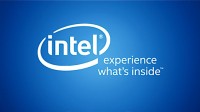Intel launched new Xeon 6 processors built for high-density AI work in data centers. Intel CEO Pat Gelsinger emphasized performance and power efficiency as he introduced the next-gen Xeon, and said that the Gaudi 3 chips for AI model training and deployment that were released two months ago are less expensive than comparable silicon from Intel rivals. “Intel is one of the only companies in the world innovating across the full spectrum of the AI market opportunity — from semiconductor manufacturing to PC, network, edge and data center systems,” Gelsinger said, embracing open standards during his keynote at Computex.
Gelsinger said Xeon 6 arrived “ahead of schedule,” coming only six months after the company released the fifth generation model. Speed is of the essence for Intel, which CNBC says “is trying to catch up to Nvidia and AMD, after having largely been on the sidelines of the AI frenzy which saw tech giants like Meta, Microsoft and Google buying up as many Nvidia chips as possible.”

But Gelsinger touted Intel’s accomplishments, summarized in a Computex news release. These include ushering in “the AI PC era with Intel Core Ultra processors in more than 8 million devices.” He also teased the new Lunar Lake client architecture set for release for AI PCs later this year.
Expected to ship in Q3, the Lunar chips will compete against Nvidia and AMD silicon designed specifically for AI PCs.
“Facing the existential threat of Arm and the opportunity of AI PCs, Intel has apparently ditched its famous tick-tock cadence for a whole new system-on-chip design, one that not only triples the size and more than quadruples the performance of its AI accelerator, but promises up to 14 percent faster CPU performance at the same clockspeed, 50 percent more graphics performance, and up to 60 percent better battery life than last year’s model,” The Verge writes of Lunar Lake.
The most striking change, according to The Verge, is that Lunar Lake laptops “won’t have separate memory sticks or chips,” but “bakes 16 or 32GB of LPDDR5X memory into the package itself, with no ability to connect more RAM.”
“Intel tweaked every part of the chip to make it happen,” The Verge says of the company’s positioning, quoting Intel technical marketer Robert Hallock calling it “x86 power like you’ve never seen it before,” and adding that it can “definitely” beat what’s coming from Qualcomm, too.
Nvidia and AMD each said they will be debuting new AI data center chips on a yearly basis. At Computex, Nvidia revealed a new Rubin platform that would succeed the Blackwell family, announced in March.
“Unlike chip designers Nvidia and AMD, Intel not only designs its chips but also manufactures them,” notes CNBC, adding that “its foundry business has been struggling” but will benefit from the government CHIPS Act.

No Comments Yet
You can be the first to comment!
Leave a comment
You must be logged in to post a comment.